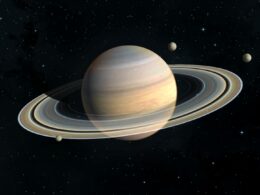The Sun is the closest star to Earth and is the center of our Solar System. It is a massive ball of plasma that emits heat and light, which makes life on Earth possible. The Sun is also responsible for the Earth’s rotation around its axis, which determines the length of a day.
A day on the Sun is defined as the time it takes for the Sun to rotate once around its axis. However, due to the Sun’s size and composition, a day on the Sun is much longer than a day on Earth. Scientists have estimated that a day on the Sun is approximately 27 Earth days long. This means that it takes the Sun 27 Earth days to complete one rotation around its axis.
Solar Rotation and Day Length
Defining a Day on the Sun
A day on the Sun is the time it takes for the Sun to complete one full rotation on its axis. However, due to the Sun’s gaseous nature, different parts of the Sun rotate at different speeds. At the equator, the Sun rotates faster than it does at the poles. Therefore, the length of a day on the Sun varies depending on the latitude.
At the equator, a day on the Sun would take approximately 24.5 Earth days, while at the poles, it would take about 34 Earth days. This means that a day on the Sun is longer than a year on Earth, which is approximately 365.25 days.
Sun’s Rotation Variability
The Sun’s rotation is not constant, and it varies over time. The rotation rate is affected by the Sun’s magnetic field, which is generated by the motion of charged particles in the Sun’s interior. The magnetic field lines of the Sun are twisted and distorted as the Sun rotates, which causes variations in the rotation rate.
According to NASA, the Sun’s rotation axis is tilted by about 7.25 degrees from the axis of the Earth’s orbit. This means that we see more of the Sun’s north pole in September of each year and more of its south pole in March. The Sun’s rotation rate also varies with latitude, with the equator rotating faster than the poles.
In addition to the variability in the rotation rate, time dilation also affects the length of a day on the Sun. One day on Earth (86,400 seconds) would be one day and five minutes on the Sun due to time dilation.
Impact on Solar and Earth Phenomena
Solar Activity and Its Effects
Solar activity, including sunspots, solar flares, and the solar cycle, has a significant impact on the Earth’s environment. Sunspots are dark regions on the sun’s surface that are cooler than the surrounding areas. They are associated with strong magnetic fields and are often the source of solar flares. Solar flares are sudden, intense bursts of radiation that can cause disruptions in radio communications, power grids, and satellite operations. The solar cycle, which lasts approximately 11 years, is the periodic variation in the number and intensity of solar flares and sunspots.
Influence on Earth’s Environment
The sun’s activity influences the Earth’s weather, climate, seasons, and ocean currents. For example, during a solar eclipse, when the moon passes between the Earth and the sun, the temperature can drop by several degrees Celsius. The sun’s magnetic field also affects the Earth’s magnetic field, which can cause disruptions in satellite communications and power grids.
The sun’s activity can also affect the Earth’s climate. Total Solar Irradiance (TSI), which is the amount of solar energy that reaches the Earth, varies over the solar cycle. According to the Union of Concerned Scientists, the TSI varies by about 0.1% over the solar cycle, which can cause changes in the Earth’s climate. However, the impact of solar activity on the Earth’s climate is still not fully understood.
Frequently Asked Questions
What is the duration of a solar day?
A solar day is the time it takes for the Sun to return to the same position in the sky. The duration of a solar day on the Sun is approximately 24.47 Earth days.
How does the length of a day on the Sun compare to a day on Earth?
The length of a solar day on the Sun is much longer than a day on Earth, which is 23 hours, 56 minutes, and 4 seconds long. This is due to the Sun’s larger size and slower rotation.
In terms of Earth hours, how many make up a solar day?
A solar day on the Sun is approximately 589 Earth hours long.
What is the difference between a sidereal day and a solar day on the Sun?
A sidereal day is the time it takes for a celestial body to complete one rotation relative to the fixed stars. On the other hand, a solar day is the time it takes for the Sun to return to the same position in the sky. Due to the Sun’s motion relative to the fixed stars, a solar day on the Sun is slightly longer than a sidereal day.
How is the concept of a day on the Sun defined given its gaseous nature?
The concept of a day on the Sun is defined by tracking the rotation of features on its surface, such as sunspots, using telescopes. This allows scientists to measure the duration of a solar day on the Sun.
What methods do scientists use to measure a day on the Sun?
Scientists use various methods to measure a day on the Sun, including observations of sunspots, tracking the motion of coronal mass ejections, and measuring the oscillations of the Sun’s surface. These methods allow scientists to better understand the Sun’s rotation and its impact on space weather.





